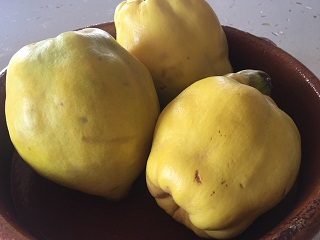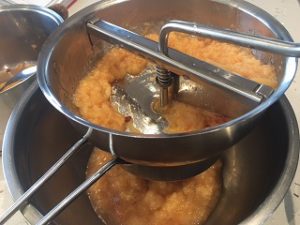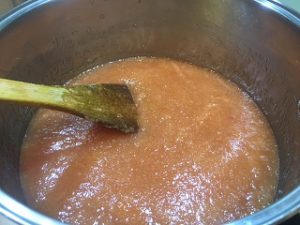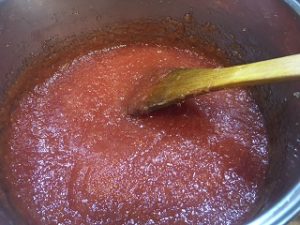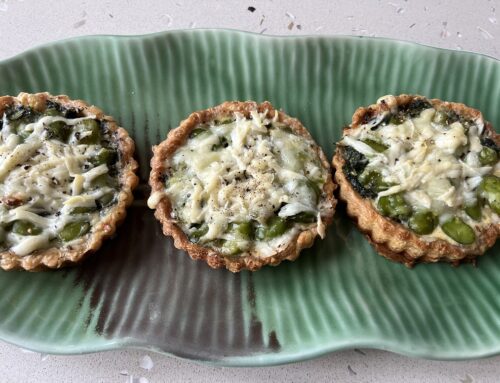Our Melbourne quince season seems to be so short that you need to be quick to buy nice, firm, yellow quinces. If you are really lucky, you may have a friend with a tree laden with too many fruit and so happy to share. That is not me unfortunately, so I need to keep an eye on the market stalls for my supply.
Last Saturday I was in luck and found some beautiful quinces for my first batch of season of quince paste. Do have a try for yourself and you will see it is not difficult to make.
If making this for the first time, don’t use more than three fruit, which could be about 1.6ks, as the paste can become a little hard to handle.
It just requires following these easy steps of steaming; mouli-ing, weighing, adding sugar and cooking and the final drying out process. In step two, you need to monitor and stir the pot from time to time, so it does not stick and burn the bottom and get too thick in texture. It is good to be in or around the kitchen whilst it is cooking so you can stir it, whilst you are waiting for the colour to deepen to the luscious, rich, ruby and the texture to thicken to a thick paste.
You will be rewarded with a beautiful, deep ruby coloured paste which you can store for months and one which will delight you and your friends. Serving mine yesterday, a friend said it was the best she had ever tasted! High praise indeed.
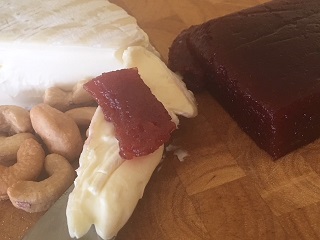
Quince paste
Makes a lamington sized tray of paste
3 firm, yellow quinces, with as few blemishes as possible
125ml water
juice from one small lemon
muslin and string
sugar
Step one: Wash the quinces well. Peel and cut them into smallish chunks, about one eighths; remove the cores. Wrap about three quarters of the peel and secure in a muslin bag; place in the pot. Add three quarters of the cores and pips to the pot as well. The peel, cores and pips all add pectin to the mixture which will help the paste to set
Pour in lemon juice and water. Cook over a medium heat until the quinces are soft, about 30 minutes.
Step two: Remove from the heat and discard the muslin bag of peel. and process though a mouli, or food mill. This removes the seeds and cores and gives a good purée texture. Work as much of the quinces as you can through the mouli. Discard the small amount remaining in the sieve.
Weigh the purée; add three quarters of this weight in sugar.
Place altogether back into a clean, heavy-based, wide opened pot. Cook stirring constantly until the sugar is dissolved, turn the heat to low, and simmer at a slow, ‘lazy bubble’ until the paste turns from yellow to a ruby, orange red and starts to come away from the sides. This could take 2 – 3 hours, so keep an eye on it and stir from time to time to stop it sticking to the bottom or sides of the pot. I use a diffuser under the pot. When done, turn out into a baking paper lined tray to cool.
Step three: The final step is to dry the paste out further.
You can now either dry it naturally and leave it in the sun for a few hours with a gauze cover to protect it from flies; or, as I do, and place it in the oven on very low, at 50°C, or less, and leave it there for 36 -48 hours until dried out to a firm, but still moist paste, one that will hold its shape and cut cleanly with a sharp knife.
Check every so often so it does not colour to brown or start to crystallise; at this temperature it should be fine.
Wrap in the baking paper and store in an airtight container in the fridge or pantry.
- Mouli then weigh
- Return to pot and cook
- Until this beautiful colour

